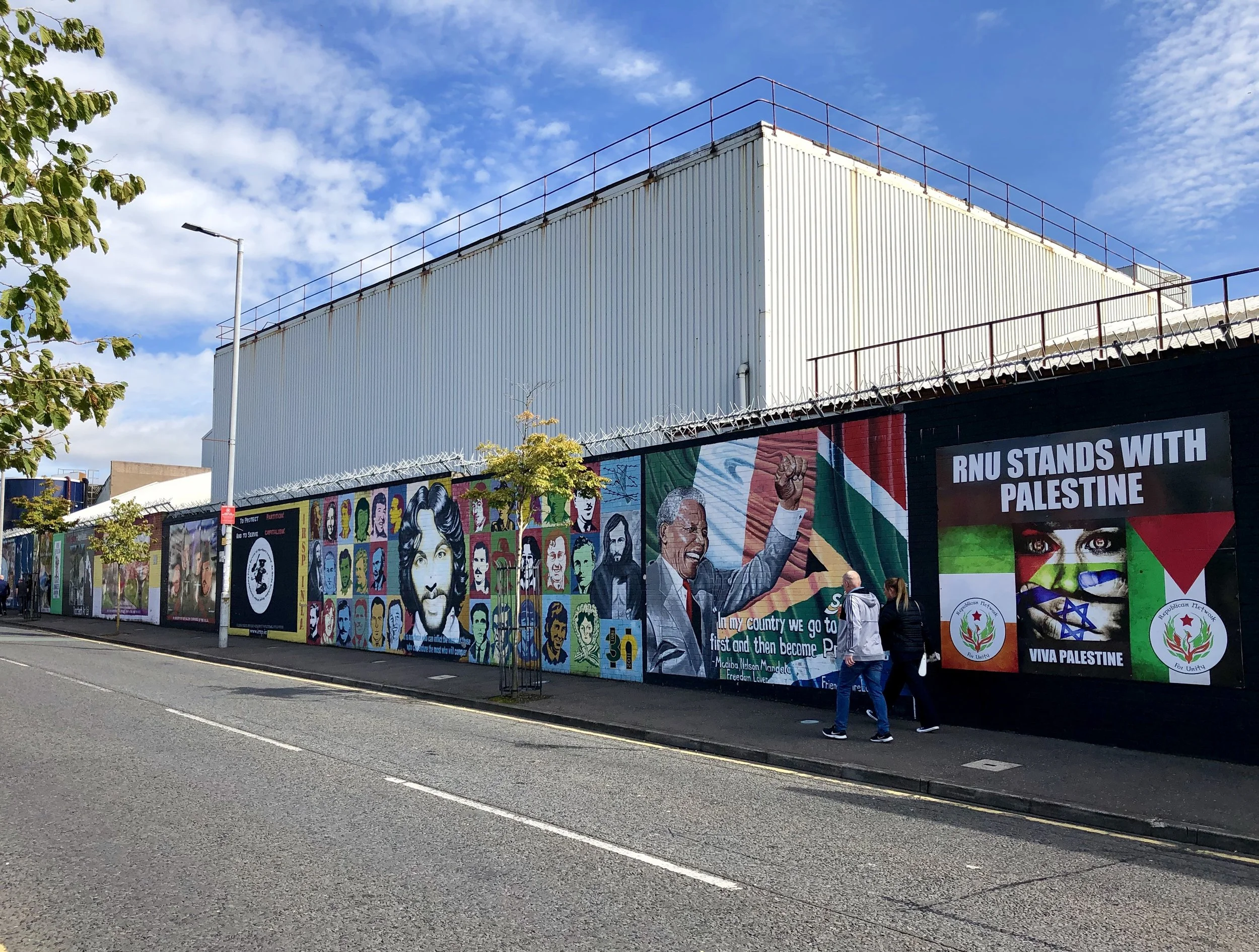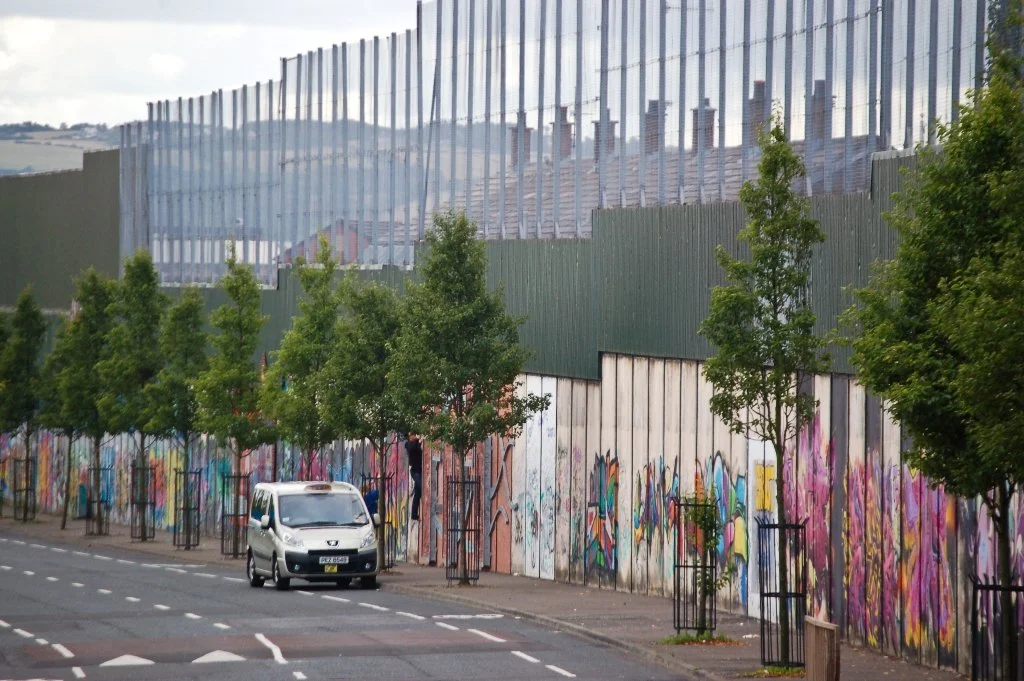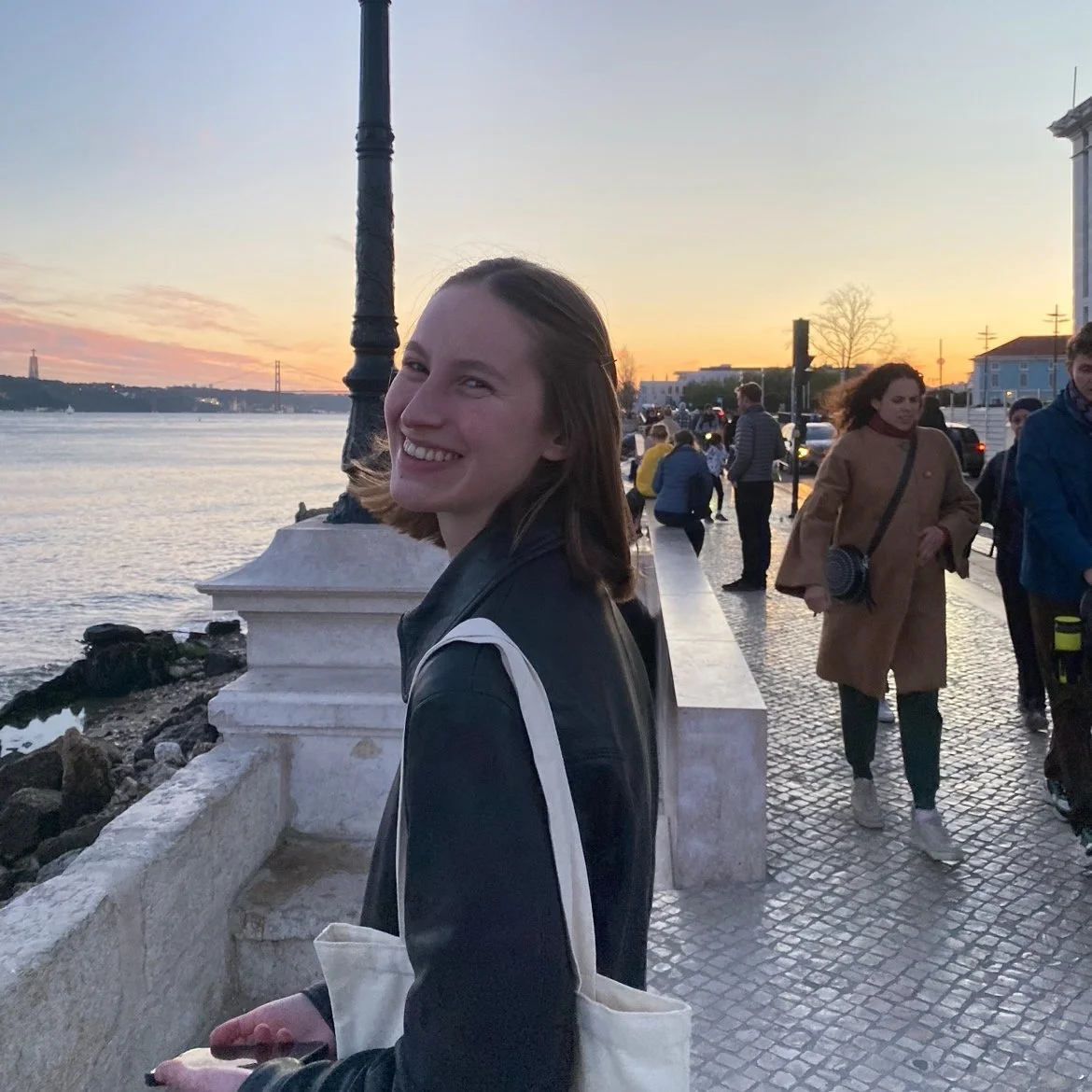Today, there are efforts to take down the walls that have separated the loyalist and nationalist neighborhoods in Belfast for over fifty years.
Murals along the Falls Road side of Belfast’s Peace Walls. Megan Coughlin. CC BY-ND 2.0
The Walls are not only a reminder of a violent history, but a medium for artistic expression and international solidarity.
The origin of the partition that defines Ireland today can be traced back to the early 1920’s, when a successful Irish rebellion from British rule led the island to be broken up into two countries. The Irish Free State gained independence from the United Kingdom, while Northern Ireland remained part of the British state. Irish Nationalists, who generally support an island-wide Irish republic, are predominantly Catholic, while British Loyalists/Unionists are mostly Protestants.
The 1960s saw the beginning of ‘the Troubles’ in Northern Ireland. The Troubles refer to the period of violence, riots, and unconventional warfare between the British state and Loyalists paramilitaries, who believed Northern Ireland should remain part of the United Kingdom, and Irish Nationalist paramilitaries, who wanted Northern Ireland to join the rest of the island as a United Ireland.
It was within the context of the Troubles that the first Northern Ireland peace walls were built in 1969, after days of intense rioting in Belfast and Derry/Londonderry. Originally constructed as a temporary structure to ensure peace between the two sides, the walls have hardened into semi-permanent lines that continue to divide the cities today.
The signing of the Good Friday Agreement in 1998, marked the end of the Troubles. The agreement set up an autonomous legislature and government that could legally only be governed by a coalition of Unionist and Nationalist political parties. Furthermore, while still recognizing Northern Ireland as a part of the U.K., the agreement also acknowledged the possibility for the area to one day unite with the rest of Ireland should a majority vote to do so.
The Good Friday Agreement was a pivotal marker of peace and cooperation between the two sides. However today, some 25 years after its signing, peace walls continue to divide Catholic and Protestant neighborhoods in Belfast.
One of the largest of these peace walls runs along the Falls and Shankill Roads in West Belfast and divides two major Catholic and Protestant neighborhoods. The wall is interrupted by stretches of metal gates, several of which still maintain a curfew, including the Townsend Street gates which closes every weekday night and throughout the weekend. The enduring curfew speaks to the continued tensions between Belfast’s Catholic and Protestant communities, which have been reinforced by the 2016 Brexit referendum.
But today, the walls are not just borders of separation. They’re also a canvas of artistic expression.
The Shankill and Loyalist side of the divide depicts memorializations of those killed by the Irish Republican Army (IRA) and tributes to the Ulster Defense Association, a Loyalist paramilitary organization founded in 1971. A portrait of King WIlliam, known as William of Orange, looks out upon the neighborhood where Union Jacks decorate the streets.
In contrast, the Falls Road and Irish nationalist side of the divide touts the orange and green Irish tricolor. Here, murals celebrate national pride with depictions of Gaelic sports and memorializations to national heroes, including a large portrait painted on the side of Sinn Fein Political Party Press Office of Bobby Sands, a popular IRA leader and elected MP who died of hunger strike while imprisoned.
It is also on the Falls side that one can see the famous International Wall, depicting images of global civil rights leaders the likes of which include Fredrick Douglass, Nelson Mandela, Harriet Tubaman, the Rev. Martin Luther King Jr., and Bob Marley. In this neighborhood, it is common to Palestinian flags hanging in people’s windows, aligning a mission to free Irish land from British rule with that of occupied territory in Palestine. A mural on the International Wall depicts hands clasped between prison bars, one of which is draped in an Irish national flag, the other in a Palestinian flag.
Murals along the peace wall that runs through Shankill and Falls Road. Mike McBride. CC BY-NC 2.0
In 2013, a project called Together: Building a United Community was launched by the Northern Ireland Executive. The project called for the removal of all walls in Northern Ireland by 2023, but progress has been slow and in January of 2023, about 60 walls still remain. In a 2015 survey by Ulster University on public attitudes towards the peace walls, about 35% of respondents wanted the peace walls ‘come down some time in the future’ with 40% of Catholics and 25% of Protestants surveyed sharing this position, while 44% of Protestants and 23% of Catholics ‘would like things left the way they are now’.
While the future of the peace walls remains uncertain, their presence serves as a striking visual reminder of division within a city that is increasingly embracing a global economy and multiculturalism, the very extent of which is exemplified by the international calls for peace and solidarity in the artwork that lines the divided city.
To Get Involved
The Social Change Initiative (SCI) is working to support peacebuilding and dialogue between Nationalists and Unionists. Based in Northern Ireland, SCI partners with local activists and publishes articles and reports that detail the strategies and reflections of those working directly within divided communities. SCI also connects local leaders to a global community of human rights activists through fellowships and mentoring programs, in an effort to create an international network through which individuals can share communication and advocacy tactics as well as strategies for peacebuilding and conflict disruption.
How To Visit
One of the most popular ways for travelers’ to experience and learn about Belfast’s peace walls is through Black Taxi Cab tours.
The tours began in the 1970s and are recognized for their effort to provide a balanced and unbiased history of Belfast. The black taxis were first employed as a kind of bus service in the midst of the Troubles in order to transport working class people from their neighborhoods to the city center. The tours are notably co-run by Catholics and Protestants, allowing visitors to hear perspectives from both communities as they travel across the Falls and Shankill roads.
Jessica Blatt
Jessica Blatt graduated from Barnard College with a degree in English. Along with journalism, she is passionate about creative writing and storytelling that inspires readers to engage with the world around them. She hopes to share her love for travel and learning about new cultures through her work.



